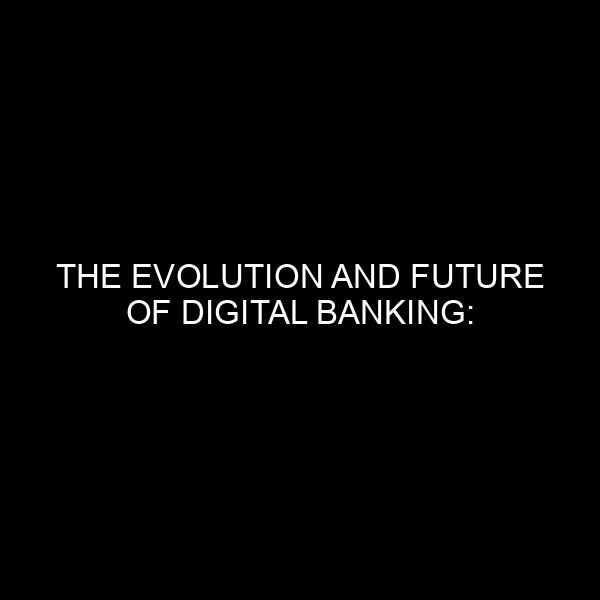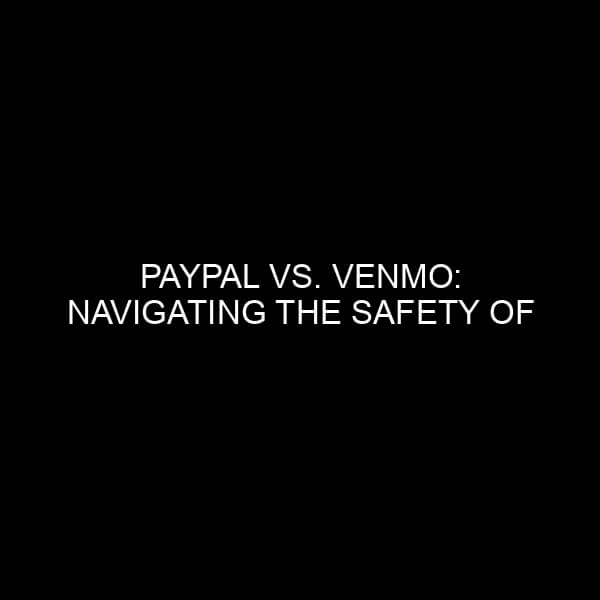The Evolution and Future of Digital Banking: Navigating the Financial Revolution
Digital banking has seen a meteoric rise over the past decade, transforming how we interact with our money, engage with financial institutions, and conduct everyday transactions. As someone with a background in the financial market and banking industry, I’ve witnessed this evolution firsthand. What began as mere online banking has now matured into a comprehensive ecosystem with features such as AI-driven financial advice, cryptocurrency integration, and seamless global transactions.
A Brief Look Back: The Origins of Digital Banking
In the late 20th century, with the advent of the internet, banks saw an opportunity to digitize their services. This started with simple online platforms that allowed customers to check their balances and recent transactions. Over time, features like online bill payment, money transfers, and digital check deposits became commonplace.
But this was just the beginning. As smartphones became ubiquitous, banks had to adapt once again, this time focusing on creating mobile banking applications that catered to on-the-go customers.
Digital Banking: More than Just Online Transactions
The term “digital banking” today encompasses much more than merely viewing account balances online. It signifies a holistic approach to banking, where technology meets the financial needs of consumers. Some key advancements include:
- AI and Machine Learning: AI-driven chatbots now address customer queries in real-time, and machine learning algorithms provide personalized financial advice based on individual spending patterns.
- Blockchain & Cryptocurrencies: Some banks have already begun experimenting with blockchain technology for faster and more secure transactions. Moreover, the integration of cryptocurrencies like Bitcoin and Ethereum into digital banking platforms is on the horizon.
- Global Transactions: Digital banks have broken down geographical barriers. With platforms like TransferWise (now Wise) and Revolut, users can make global transactions with minimal fees and in real-time.
- Open Banking: This concept allows third-party developers to create applications and services around the financial institution. It leads to a more integrated and seamless financial experience for the end user.
Risks and Challenges in the Digital Banking Landscape
While the rise of digital banking offers numerous conveniences, it’s not without its challenges. Cybersecurity remains a top concern. As more people conduct their banking online, the potential for cyber attacks, fraud, and data breaches increases.
Additionally, there’s a growing concern about data privacy. With AI and machine learning algorithms constantly analyzing user data to provide personalized services, ensuring that this data remains confidential and is used ethically becomes paramount.
What the Future Holds: Predictions for the Next Decade
Based on current trends and innovations, the following are some predictions for the future of digital banking:
- Full Integration of Cryptocurrencies: Banks will offer native support for various cryptocurrencies, allowing customers to trade, invest, and transact in a multitude of digital assets seamlessly.
- Hyper-Personalized Banking with AI: As AI technology improves, we can expect even more personalized financial advice, tailored investment strategies, and individualized spending insights.
- Virtual Banking Assistants: Think of Siri or Alexa, but for banking. These virtual assistants will handle everything from bill payments to providing financial advice, all through voice commands.
- Decentralized Finance (DeFi): The DeFi movement, which aims to recreate traditional financial systems (like loans and interest) with blockchain technology, could become more mainstream and integrated into digital banking platforms.
- Greater Emphasis on Financial Education: Digital banks will incorporate more educational tools and resources, empowering users to make informed financial decisions.
Conclusion: Navigating the Digital Banking Revolution
The world of digital banking is dynamic, shaped by technological innovations and changing consumer demands. As we move further into the 21st century, it’s clear that the lines between technology and banking will continue to blur. It’s an exciting time to be a part of this industry, but it’s also a time that requires vigilance, adaptability, and a forward-thinking approach.
For those in the financial market and banking industry, the key to success lies in staying informed, understanding emerging technologies, and always prioritizing the needs and security of the customer.






